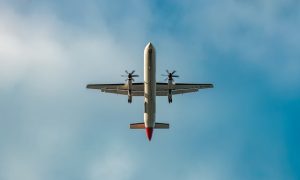
Ever wonder if the altitude at which an airplane flies affects its speed? Most commercial jets have a cruising altitude of 31,000 to 42,000 feet. After taking off, they will climb for about 10 minutes to reach this altitude.
Yes, Altitude Affects Speed
There’s a direct connection between an airplane’s altitude and its speed. Engine power aside, the higher an airplane’s altitude, the faster it will fly.
Air Density
Airplanes fly faster at higher altitudes because of density. As an airplane climbs and its altitude increases, it will be exposed to less dense air. The air becomes thinner and less dense at higher altitudes. Not only does this improve fuel efficiency; the less dense air allows airplanes to fly faster.
The speed at which an airplane flies is heavily influenced by drag. High drag and low propulsion will result in slow speeds. The air molecules are more spread out at higher altitudes than at lower altitudes, resulting in less drag. With less drag, airplanes can fly faster at higher altitudes.
Weather Conditions
Another reason airplanes fly faster at higher altitudes involves weather conditions. Most airplanes — especially commercial jets — can withstand bad weather. Thanks to protective features like static sticks or rods, they can even handle lightning strikes. Nonetheless, pilots will often try to avoid bad weather by flying at higher altitudes.
Storms and pockets of turbulent air create drag, which as previously mentioned, counters propulsion. By flying at higher altitudes, airplanes can often go over storms and turbulent air. Airplanes will avoid the bad weather while subsequently flying faster.
IAS vs TAS
It’s important to note that an airplane’s altitude only affects its true airspeed (TAS) and not its indicated airspeed (IAS). IAS, of course, is the speed referenced by the IAS indicator. It uses a tube on the airplane’s exterior to measure the speed or impact of air molecules.
TAS, on the other hand, is the speed at which an airplane is actually flying. TAS represents the speed of the airplane relative to the mass of air through which it’s flying. As the airplane climbs, its TAS will typically increase. The airplane’s IAS, though, will remain the same.
In Conclusion
It’s not a myth; airplanes do, in fact, fly faster at higher altitudes. The air is thinner and less dense at higher altitudes, meaning airplanes are exposed to less drag. And with less drag, as well as avoiding bad weather, airplanes can fly faster.



